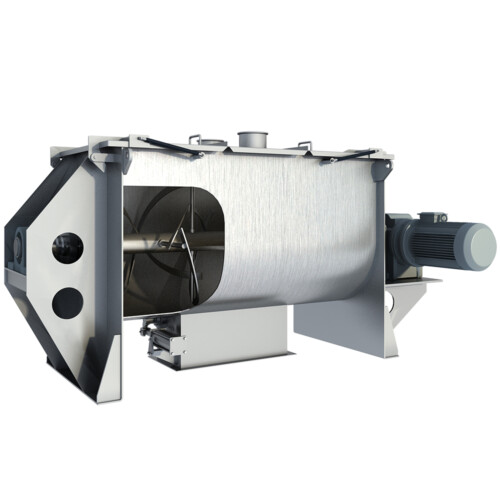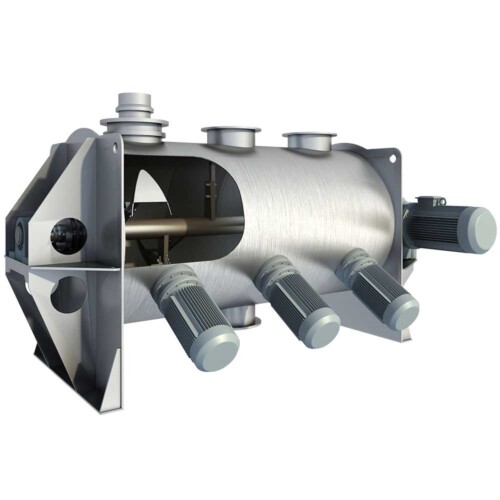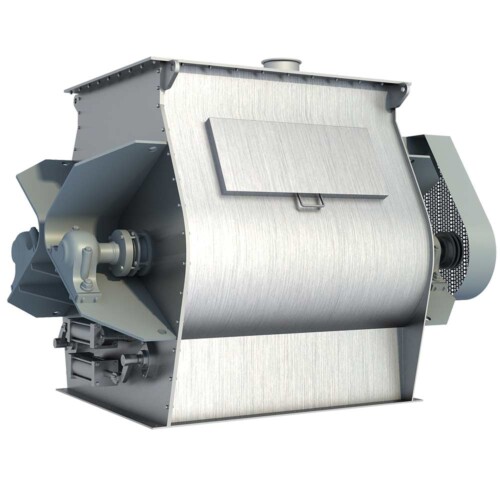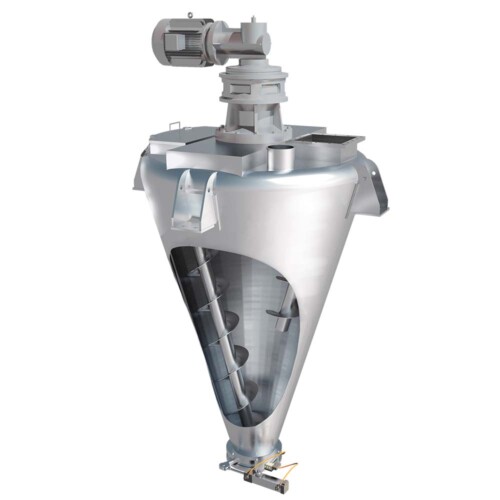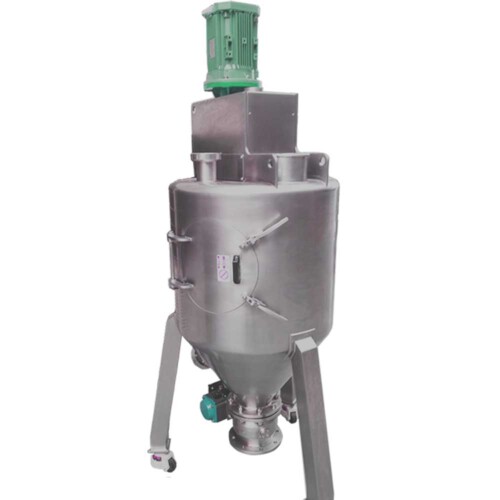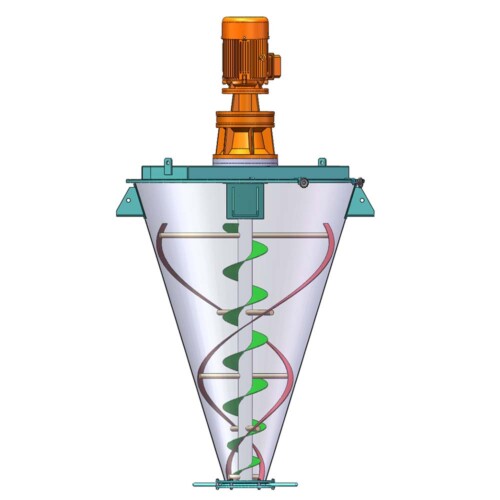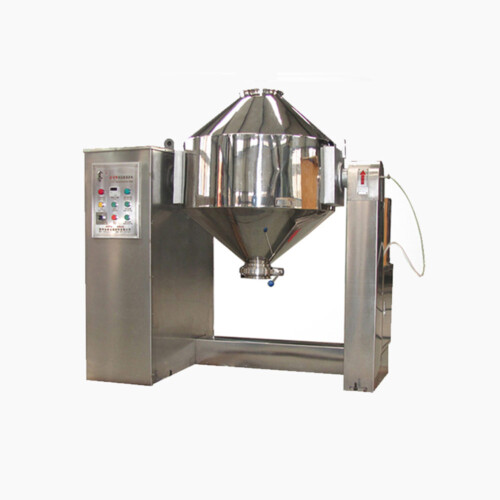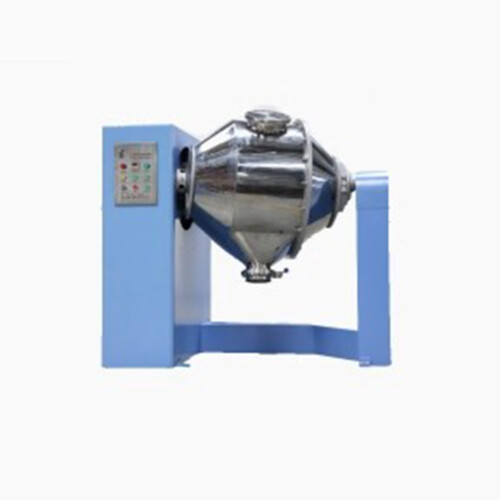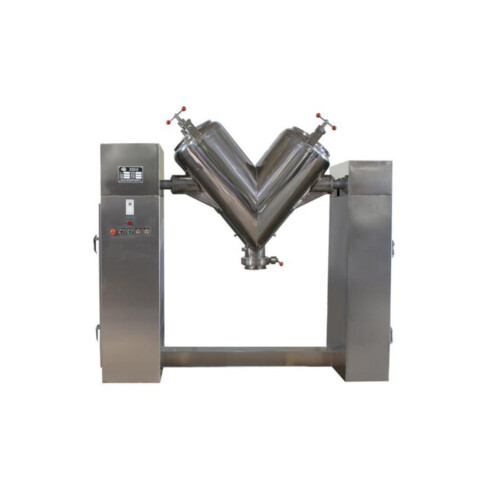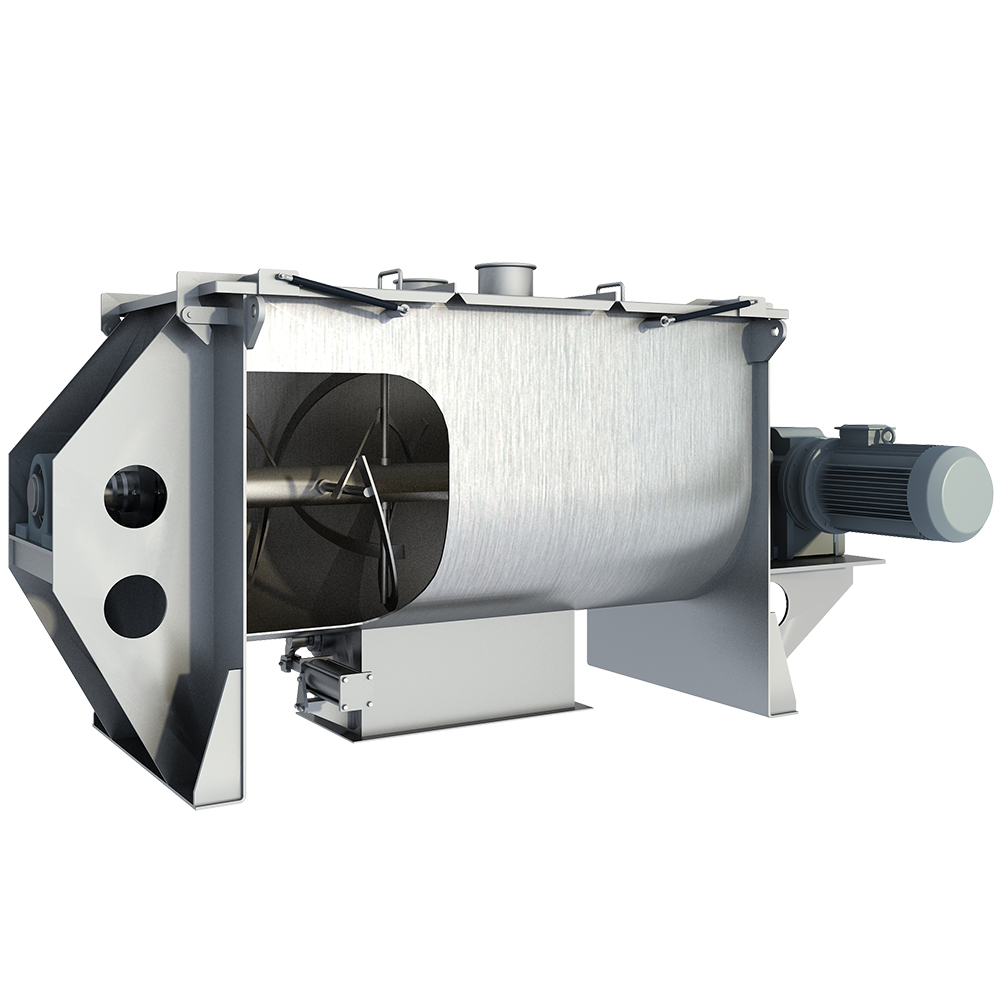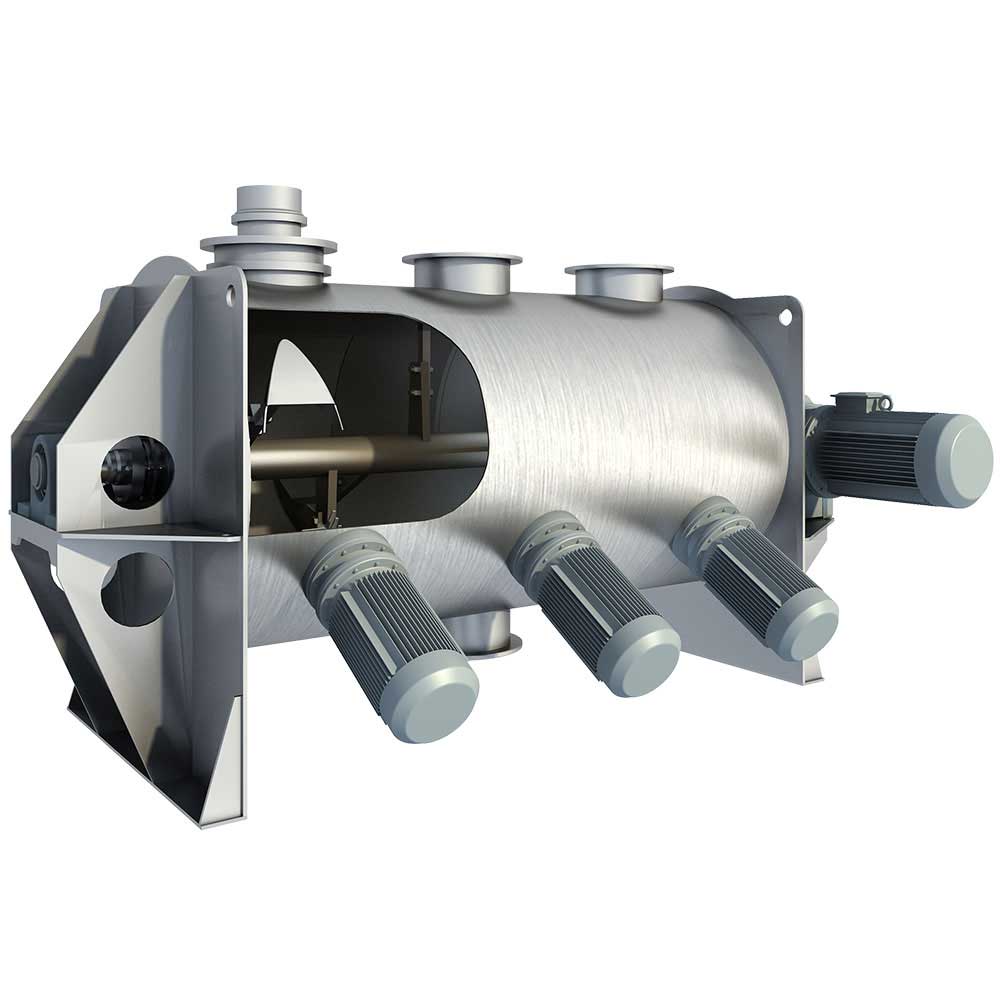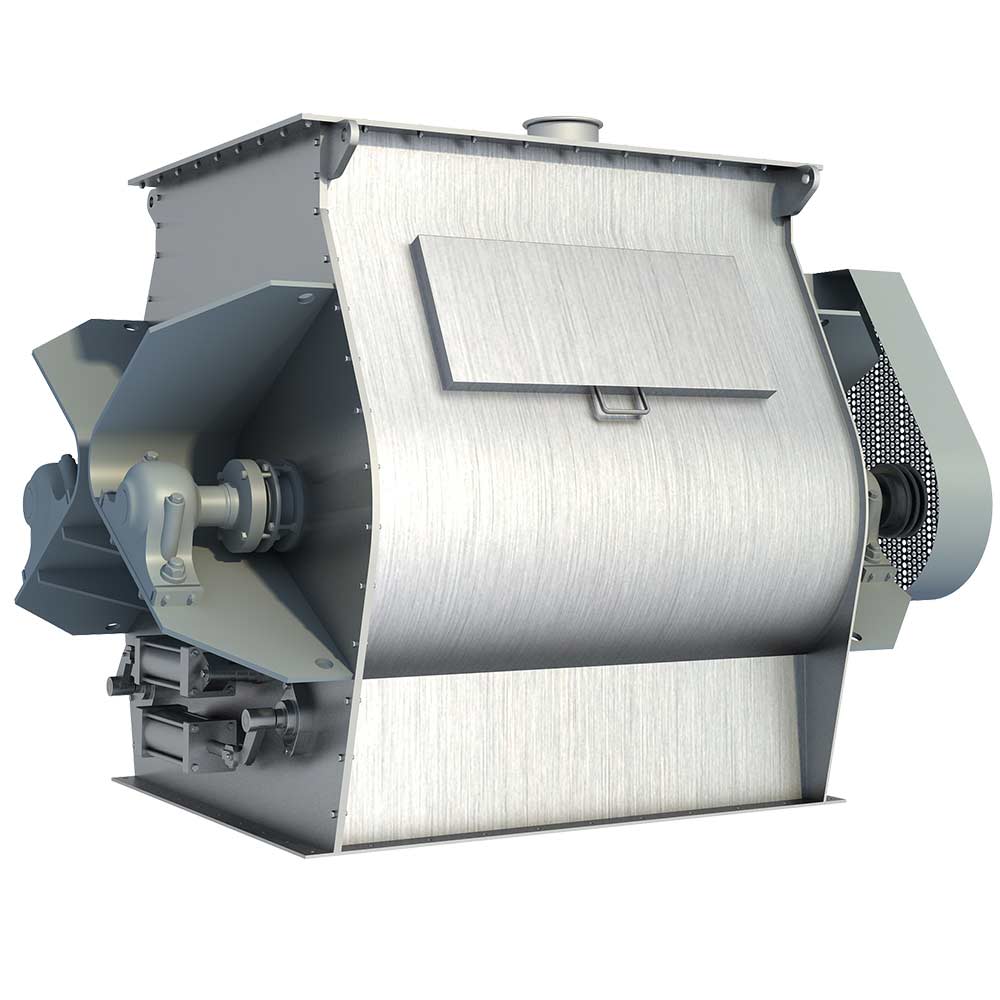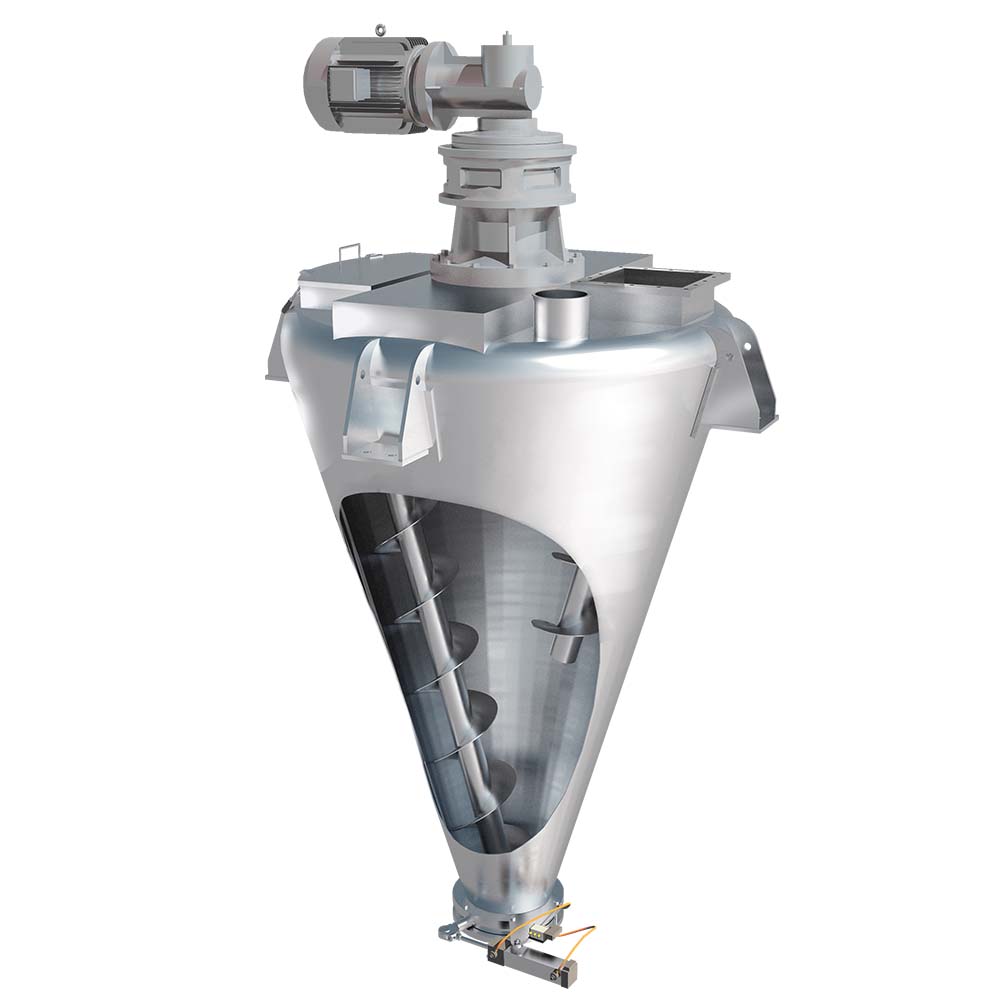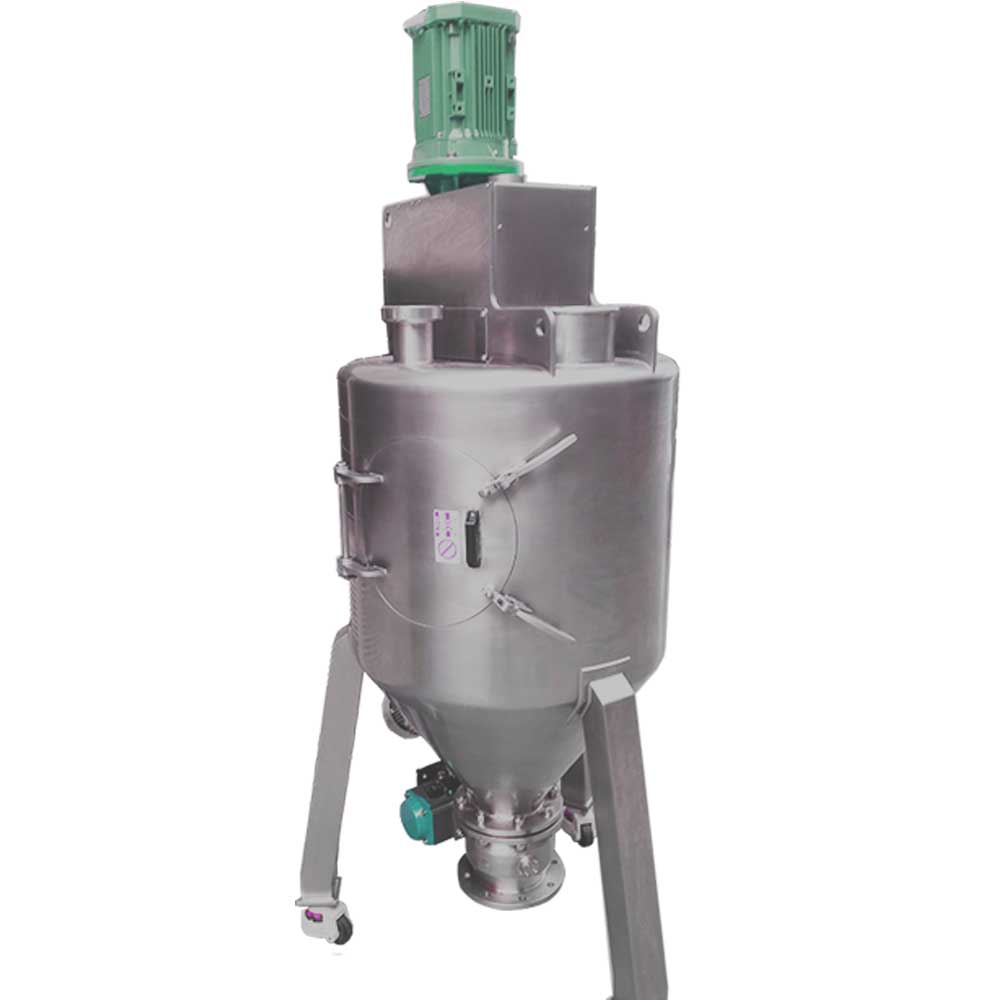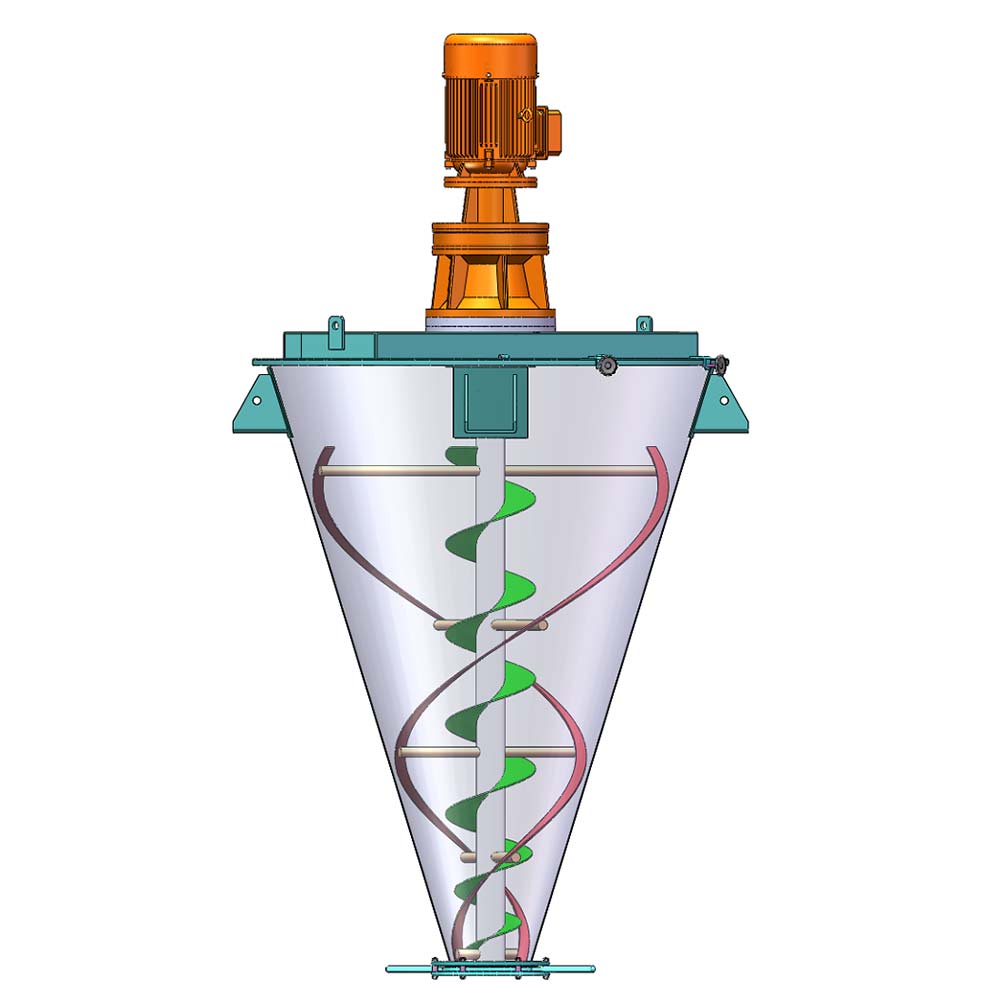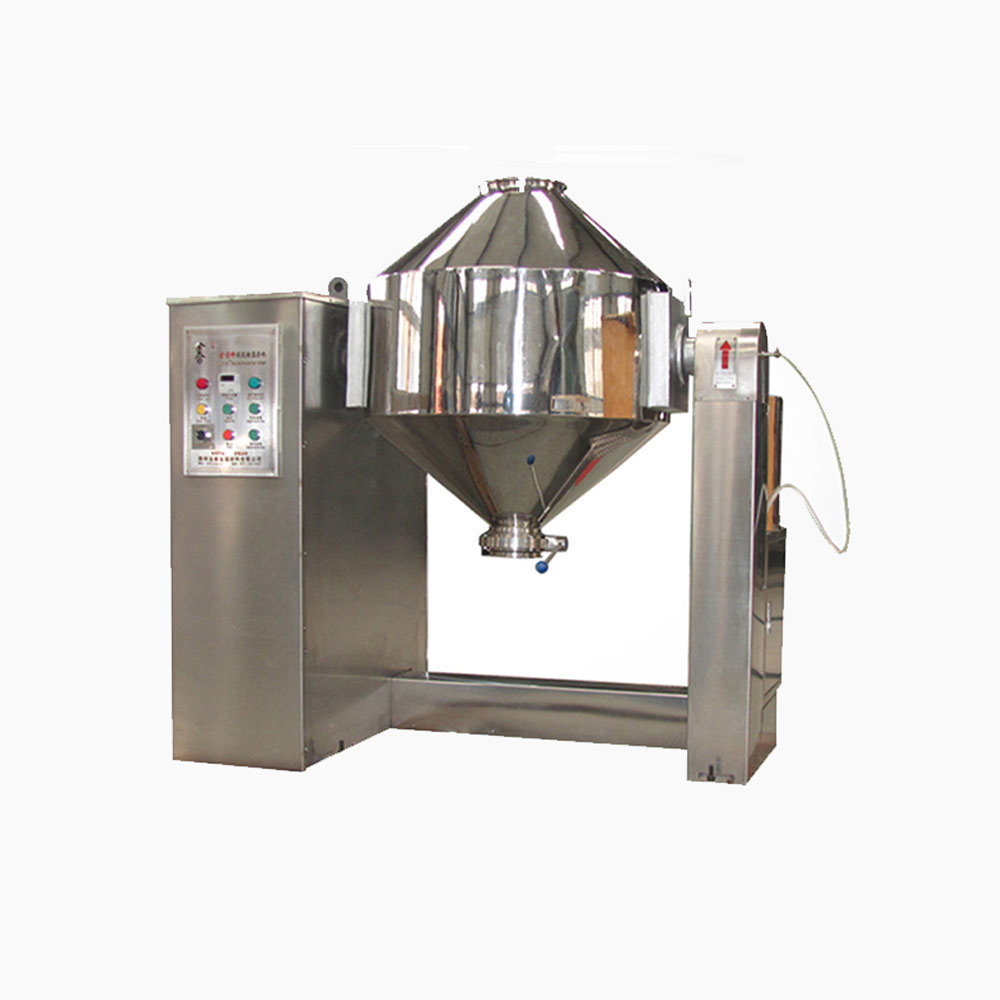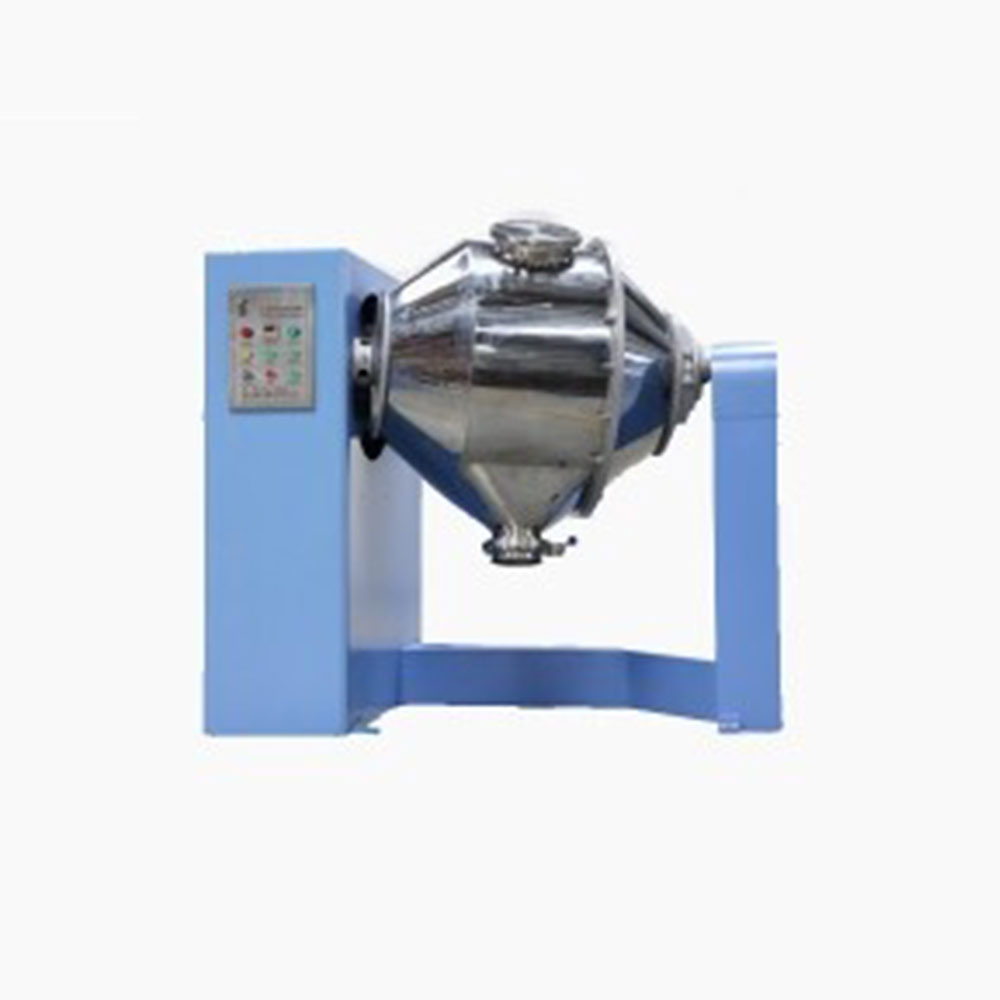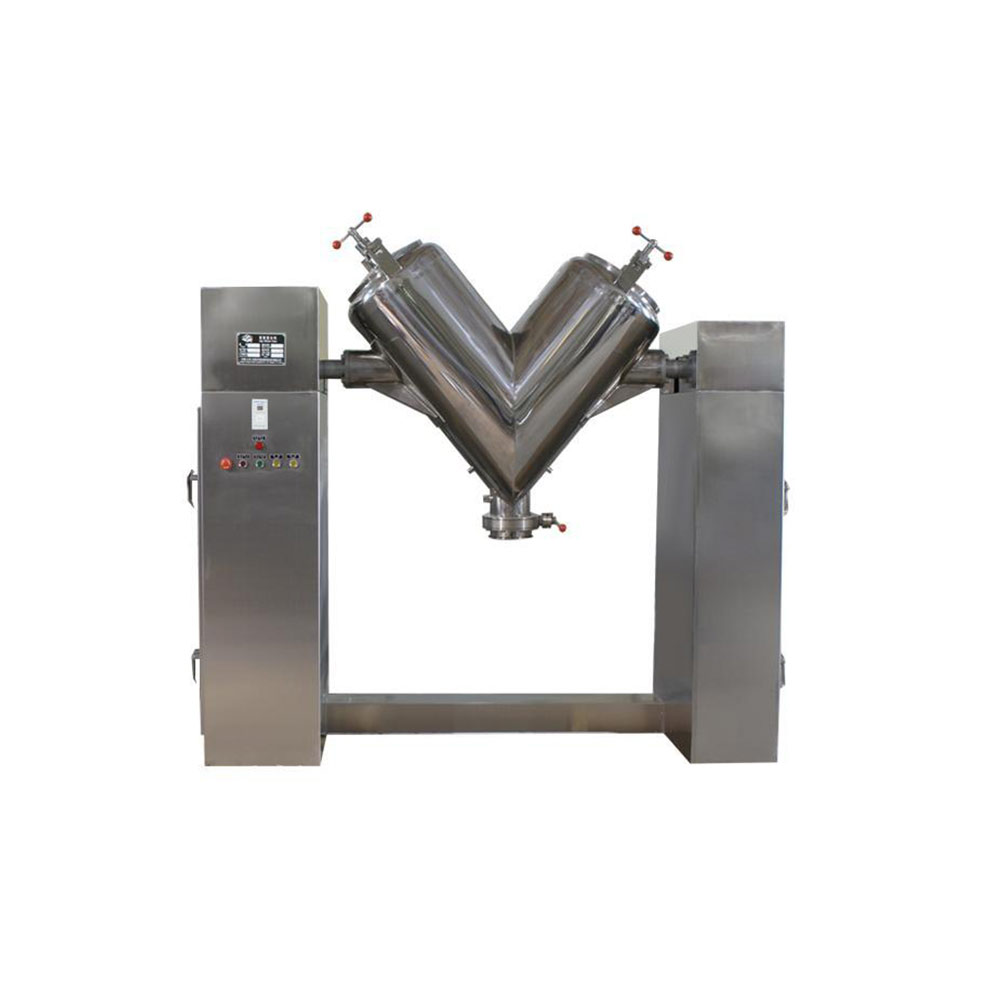Ask An Expert
Frequently Asked Questions
Yes, We can supply simple stand alone panels or automated PLC controlled systems. We normally install and test all controls on our mixers before they are shipped.
Yes, we normally test the mixers before they are shipped and mark out the wire need to connect on the control box.
We manufacture specialty mixing equipment for powder & bulk materials. Included are ribbon blender, plough mixer, conical screw mixer, twin shaft paddle mixer, V blender, double cone blender and other auxiliary equipment such as screw conveyor, quantitive auger filler.
We sell across the world, our cusotmers distribute 5 continents.
Share Us With Your Network
Pneumatic blending conveyor precisely weighs and batches custom cement blends
Selecting a pneumatic blending conveyor helps a Portland cement manufacturer weigh and batch custom cement blends one truckload at a time.
As demand for housing, commercial construction, and road building began to decline during the economic downturn 5 years ago, demand for cement dropped, too. Users began asking for blended cement products that would provide a cost-effective way to continue using cement but without sacrificing the finished concrete’s quality and strength. To meet this growing need, one Portland cement manufacturer decided to begin blending various low-cost, performance-improving materials with its cement for its ready-mix concrete customers.
Choosing additional blend materials, meeting new regulations
Central Plains Cement Co. (formerly part of Lafarge North America), Omaha, Neb., determined that it could improve and diversity its Portland cement blends cost-effectively by adding two inexpensive materials to them: fly ash and ground granulated blast-furnace slag. When mixed with cement, fly ash, a fine powdered by-product of coal combustion in coal-fired electric power plant, improves the finished concrete’s performance, quality, and strength. Adding slag, a by-product of making iron in a blast furnace, makes the wet concrete easier to work with and reduces thermal cracking risk in large concrete pours.
Statewide cement regulations were also changing the industry. After Nebraska Department of Roads (NDOR) studies determined that alkali-silica reaction (ASR), a cracking pattern occurring in concrete, could be mitigated by adding fly ash to cement mixes, the NDOR adopted a provision requiring that all cement products used in its construction projects have fly ash either blended or inter-ground with the cement at the rate of 25 percent.
Searching for an equipment solution
The cement manufacturer began looking for equipment with flexibility to provide low-cost, high-performance custom cement blends that would meet both NDOR requirements and its customer’s needs one truckload at a time. The search was complicated not only by cost and environmental challenges, but the challenge of finding new equipment that could be installed around existing equipment without having to overhaul the entire 1960s facility.
After nearly 9 months researching equipment, Joel Sedlacek, territorial sales manager at Centeral Plains Cement, found that the mechanical blending equipment the manufacturer had been considering was too large, had too many components, and was too costly for the Omaha facility’s needs. Finding equipment that could provide all-in-one loading, weighing , blending, and conveying for the custom cement products would eliminate the need for multiple components such as weigh feeders, ribbon mixers, and screw conveyors. Then Sedlacek learned that another cement plant once owned by the manufacturer had long been using a pneumatic blending conveyor that successfully provided this all-in-one capability. Based on that successful history, he recommended that the blending conveyor’s supplier, Cyclonaire Corp., headquartered in York, Neb., provide the new equipment. Cyclonaire supplies all types of material handling conveying equipment.
Pneumatic blending conveyor weighs, batches, mixes up a solution
The manufacturer chose a CB Series pneumatic blending conveyor, which is a semidense-phase pneumatic blender-conveyor combination unit that has a capacity up to 70 t/h. the unit has a cone-shaped vessel that’s mounted onload cells linked on controls in the loadout control room. Depending on what recepe is pulled up on the computer, the required weight amount of each material is vacuum-coneyed from a silo to from a silo to one of five inlets near the blending conveyor’s top: Three inlets feed Portland cement into the vessel while the other two introduce slag, fly ash, or both.
During loading, positive-pressure air from a 15-psi rotary-lobe pressure blower drives a venture that creates a 16-inch Hg or higher vacuum through a suction valve on the vessel. This vacuum-loads the materials through the inlets. As each material is added, the load cells indicate when the material’s defined batch weight is reached. Once all the materials have been added, the suction valve and material inlets are closed and material is pneumatically blended for about 90 seconds, then a discharge valve at the vessel bottom is opened, Now the positive-pressure air from the blower pushes the blend out of the discharge into a discharge manifold below the vessel, where the material is fluidized and conveyed in semidense phase mode to one of the manufacturer’s 200 ton or greater loadout sils or directly to a truck. After each cycle, the blending conveyor automatically empties and becomes ready for the next batch.
The pneumatic blending conveyor’s semidense-phase conveying provides low velocities and high material-to-air ratios, minimizing particle degradation and equipment wear from the abrasive materials. The unit’s vacuum-loading capability simplifies the blending conveyor’s installation because it doesn’t require adding any costly pits or other structures needed to allow gravity loading. The blending conveyor’s design also allows the manufacturer to convey from its existing silos without modifying the silos’ current discharge equipment, thus allowing both blended and nonblended products to be loaded out.
Blending conveyor refines process, allows expansion
After introducing the pneumatic blending conveyor into its facility, Central Plains Cement quickly realized many benefits. The entire system can be operated from the loadout control room without any local supervision. For each custom cement blend, an operator uses a computerized control panel to enter each material’s proportion in the batch and the total batch size to be blended, and then starts the blending conveyor . the system operates automatically until it reaches the batch blending setpoint.
To save the operator time, cement blends can be preprogrammed, saved, and identified by a customer-selected product name. Logging and reporting of individual batches and total blended amounts is available via the conveyor’s control panel for monitoring quality requirements or ensuring adherence to state reporting requlations.
Because the blending conveyor can access all silos storing the various materials at the facility, the manufacturer decided to take full advantage of this capability by adding two blended-product loadout silos inline with the five existing silos, all the silos now use the same loadout spout, truck scale, and controls. With this arrangement, the operator report they’re able to offer high-rate loadout of custom blends or Portland cement.
“We’ve been very satisfied with the blending conveyor’s ease of blending and speed and accuracy in producing blended products,” says Sedlacek. “We’re able to easily stay within the NDOR’s specification of ±2 percent and also meet ASTM 595 requirements for blended cements. We now not only produce the fly ash blend, but can also produce many other blends that contain various levels of cement, slag, and other ashes at any percent required by our customer. We also use the blending conveyor to transfer cement products to storage silos through-out our terminal.”

